Introduction
- Brand analysis determines brand value.
- Determines brand image.
- Appraisal of internal and external business environments.
- Major concerns: industry forces and competition.
- Strength of competitive forces.
- Focus on certain economic factors.
Brand analysis is necessary for determination of brand value. It is also used to determine the image of a certain brand. Effective brand analysis involves assessment of both internal and external environments that affect a brand. Two main concerns of effective brand analysis include industry forces and competition. It is vital to determine strength of competitive forces that affect position of a brand in the market. When conducting brand analysis, it is important to give special attention to economic aspects such as market size, distribution channels, size of customer base, and number of competitors.
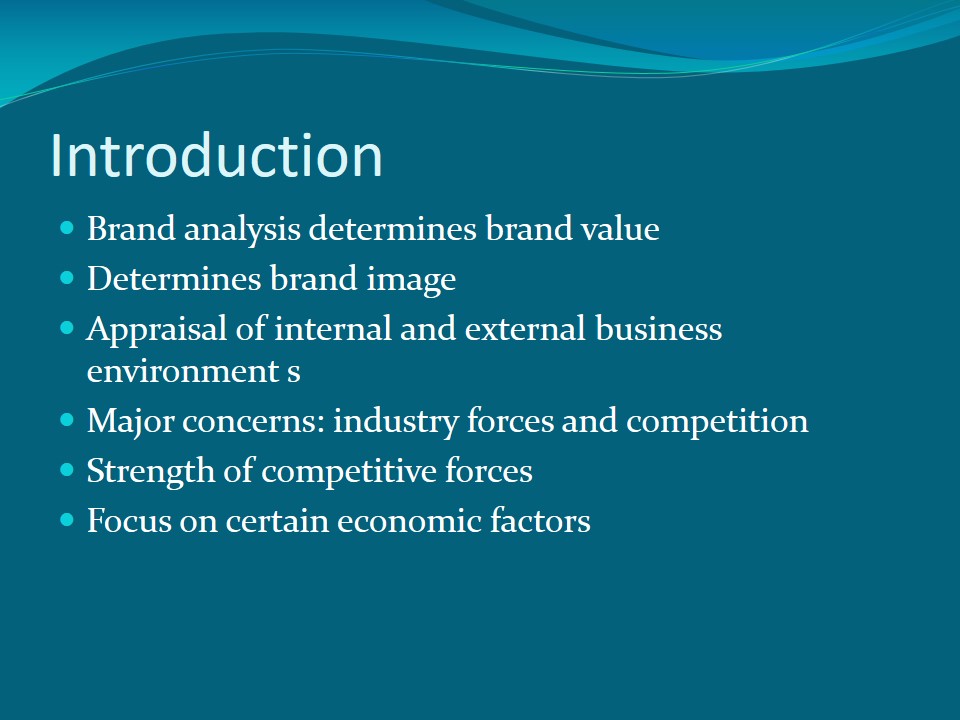
Concepts
- Apple is a technology company.
- One of the most valuable brands.
- Mobile phones and computers.
- Brand loyalty brings success.
- Creativity and consistency.
- Innovativeness.
Apple is a technology company that has been named among the most valuable brands in the world. It manufactures both mobile phones and computers. In addition, it manufactures other technological gadgets such as tablet laptops and iPods. Brand loyalty is one of the pillars of its success. It focuses on producing high quality products that have created customer loyalty. Its main drivers of success include creativity and consistency. Innovation is one of the constituents of its corporate culture, which has contributed to its dominance in the technology industry.
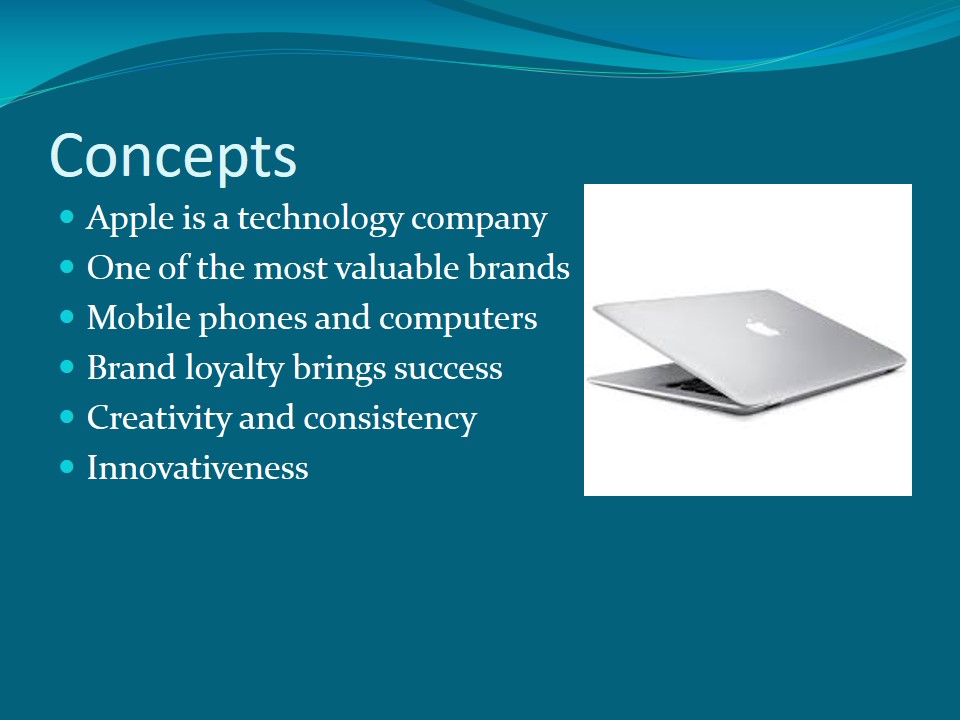
Brand identity
- Apple sells a brand and not products.
- Focus on quality and loyalty.
- An exceptional company logo.
- Quality and trust.
- Imagination, design, and innovation.
Apple’s brand identity involves aspects such as creativity, design, imagination, and innovation (Kahney, 2002). These aspects have transformed Apple into a dominant brand in the market. It no longer sells products but a brand (Holt, 2004). Apple strives to create loyalty and trust in customers by providing quality products whose designs are exceptional (Wernick, 2001). Apple brand identity is based on innovation, creativity, and design. Its designs are unrivaled and unique in the market. Its dominance has been facilitated by unique product designs (Kalb, 2013). None of its competitors has such designs and creativity.
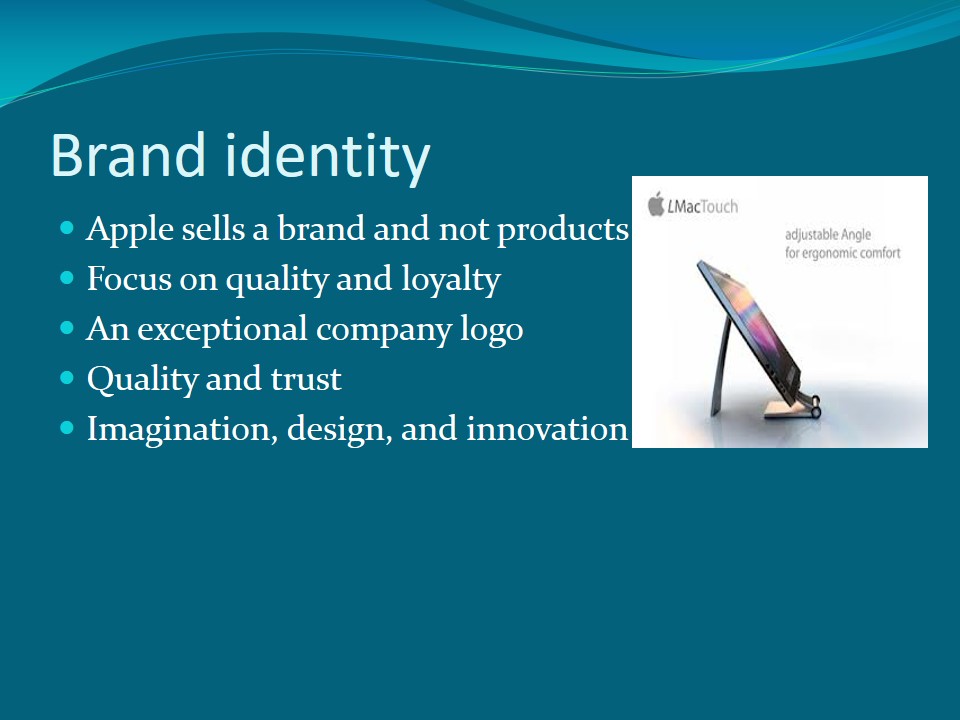
Brand positioning
- A brand for wealthy people.
- Innovators and software developers.
- Important for brand development.
- High prices.
- High-quality products e.g. iPods.
Apple has positioned itself in the market as a brand that targets wealthy people, innovators, and software developers (Kalb, 2013) . This is because of its advanced technology products which are expensive. Brand positioning is important for brand development. In addition, it has positioned itself as a brand that produces high-quality products.
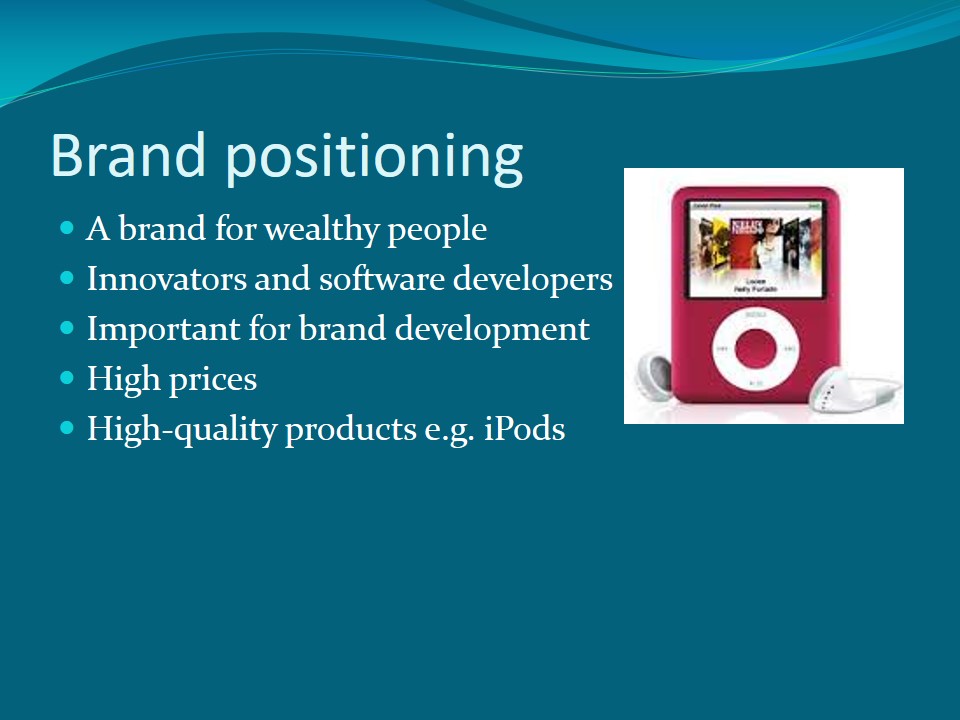
Advertising campaign
- Extensive advertising.
- Advertising is important for brand identity.
- Advertisement reveals its unique brand image.
- Creates emotional attachment.
- Advertise s brand and not products.
Apple conducts extensive advertisement for its products. However, advertisements focus on growing its brand and not selling products (Hand, 2010). Brand development is more important than increasing product sales (Olins, 2003). In addition, it improves brand identity and loyalty. Apple’s advertisements aim to create emotional attachment in customers by advertising products that serve needs of customers directly (Miller, 2004). Advertisements give empowering messages that portray its willingness and readiness to emancipate people form certain societal forces.
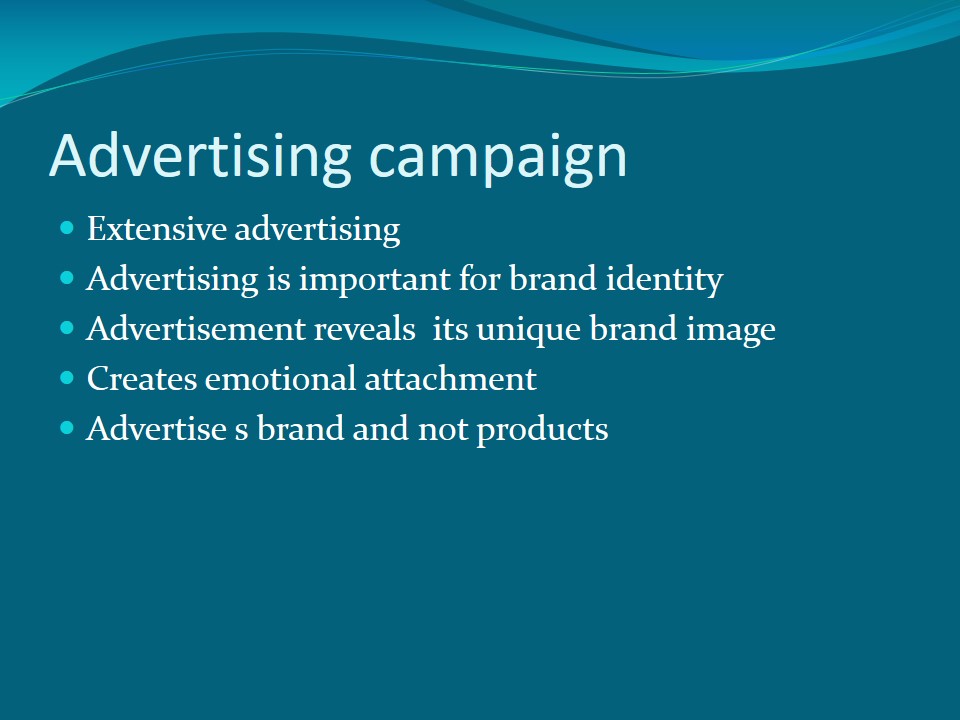
Representation
- A conspicuous brand logo.
- Mac is its representation.
- Unique product design.
- Cool colors.
- High- quality products.
- Higher product prices.
Apple has a unique and conspicuous logo that creates an emotional attachment in customers (Klein, 2000). In addition, it is represented by “Mac,” a trademark of its line of computers (Gregory, 2003). It has a unique product design that represent its products. The colors of products are cool colors that are appealing and attractive. Apple is represented by high-quality products that have higher prices than similar products produced by competitors.
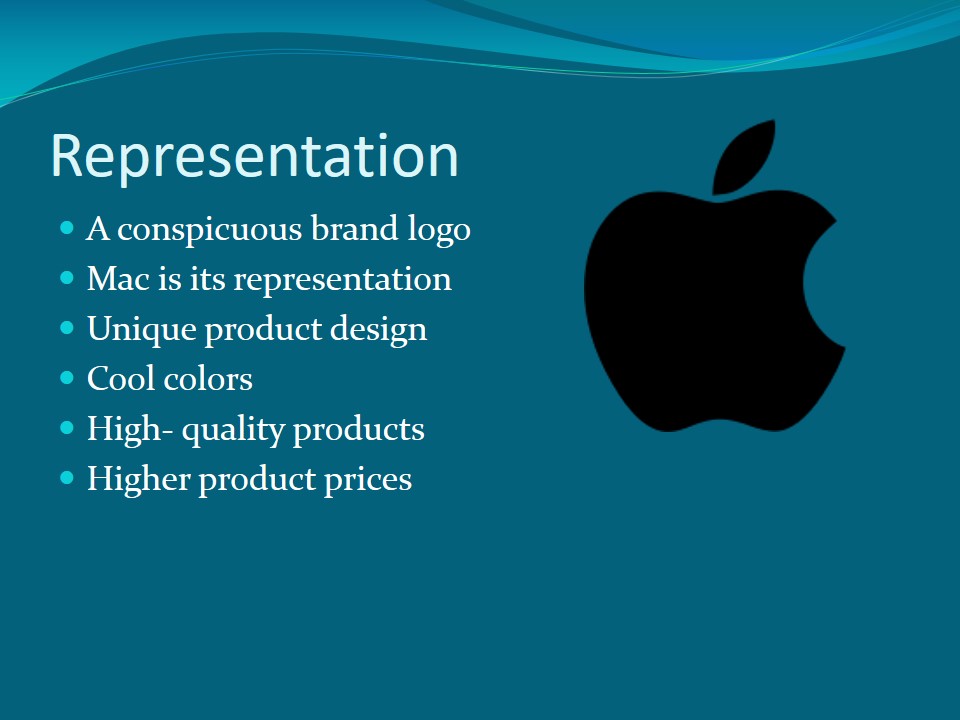
Target audience
- Targets people in all age groups.
- Particularly the youth.
- Technology enthusiasts.
- People keen on quality.
- Software developers.
Apple products are suitable for people of all ages. However, certain products are more suited for young people. For example, the iPod is more popular with young people than older people. In addition, Apple target technology enthusiasts and people keen on product quality (Fan, 2002). Since its products are more expensive, it targets customers from financially stable backgrounds. Software developers also use Apple products becase of their unique designs and advanced technology.
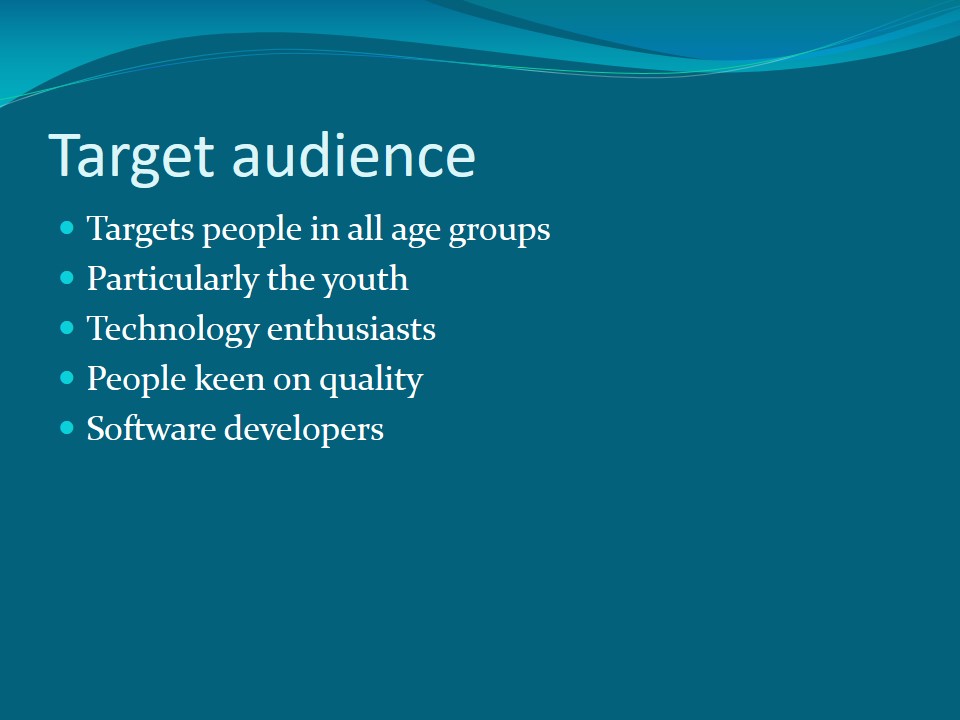
Conclusion
- Brand identity.
- Extensive advertising.
- Targets youths and software developers.
- Creativity, innovation, and consistency.
- Brand is more important than products.
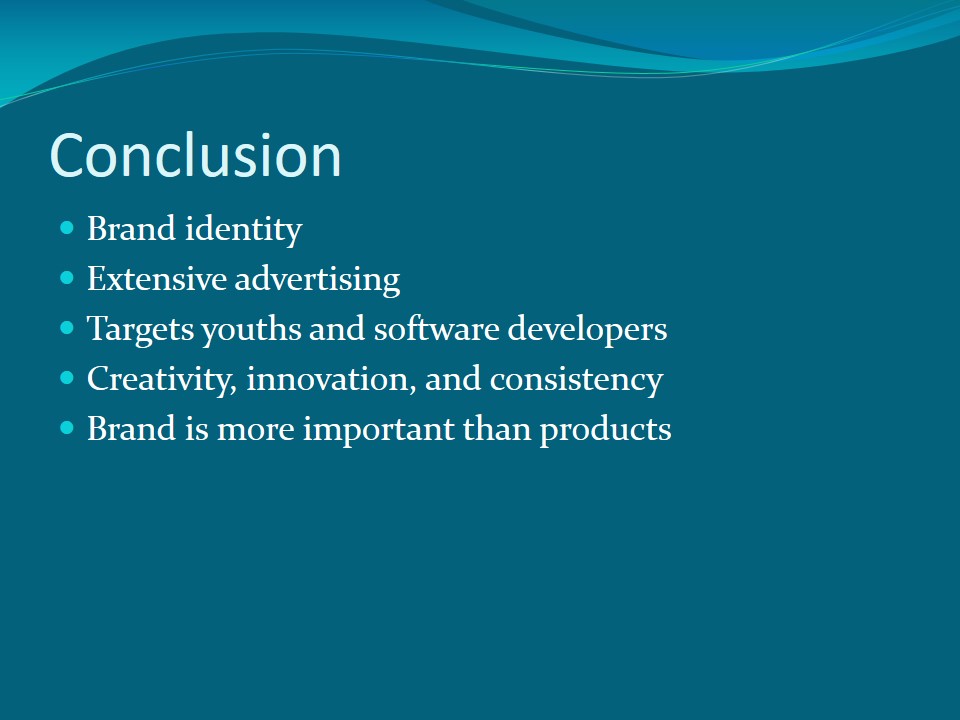
References
Fan, Y 2002, The National Image of Global Brands, Journal of Brand Management, vol. 9 no.3, pp. 180-192.
Gregory, J 2003, Best of Branding, Sage Publishers, New York.
Hand, A 2010, Enhance Your Training Brand, American Society for Training and Development, New York.
Holt, B 2004, How Brands Become Icons: The Principles of Cultural Branding, Harvard University Press, Harvard MA.
Kahney, L 2002, Apple: it is all about the brand. Web.
Kalb, I 2013, Here is how Apple can Recover from all of the Recent Brand Damage. Web.
Klein, N 2000, No logo, Random House, Canada.
Miller M 2004, The Business of Brands, Springer, New York.
Olins, W 2003, On Brand, Thames and Hudson, London.
Wernick, A 2001, Promotional Culture: Advertising, Ideology and Symbolic Expression, Sage Publications, London.